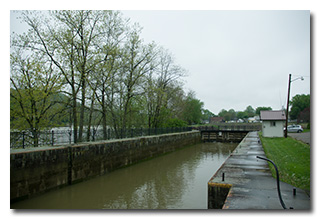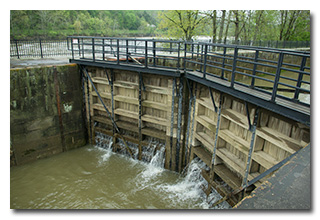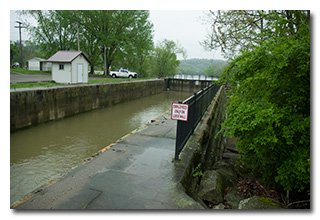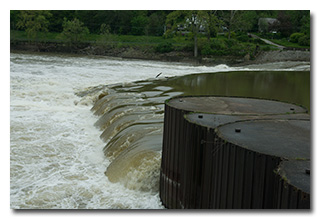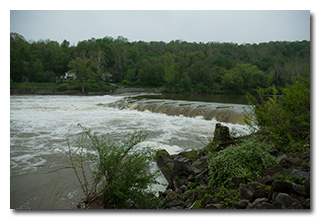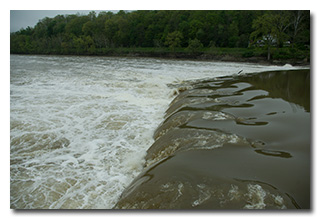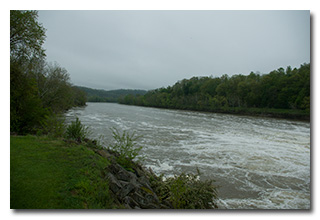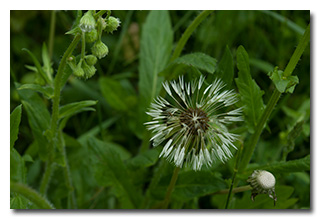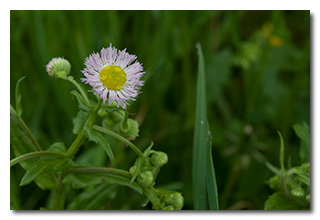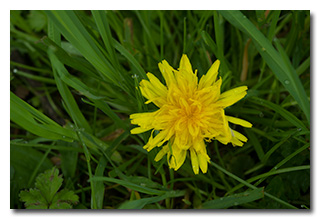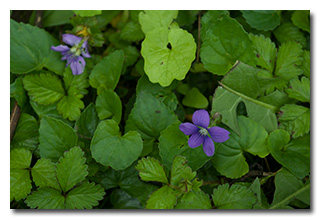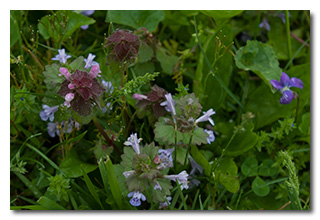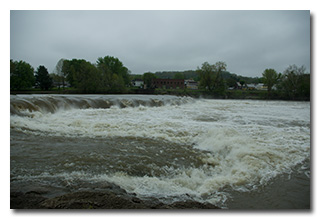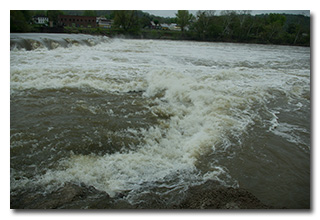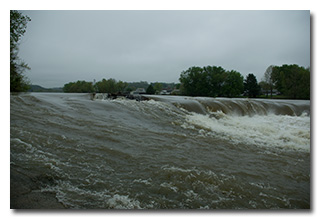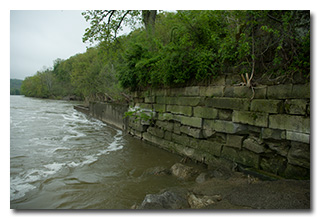
by William Eric McFadden
From the park's website:
-
The Muskingum River Parkway State Park has been placed on the National Register of Historic Places and is recognized as the Muskingum River Navigation Historic District. In its day, the system of locks and dams helped open the state and the entire Midwest to trade and development. It is the only remaining system of hand-operated locks in the nation.
The locks help boats safely bypass ten dams on the Muskingum River from Zanesville south to the Ohio River at Marietta. These locks are operated at no charge for recreational boats. Ten of the eleven locks still function— the northernmost lock, Ellis #11, is no longer in operation but offers a campground. The remaining locks have a variety of amenities and many communities along the Muskingum River offer recreational and sight-seeing opportunities for boaters and non-boaters alike. Visitors may enjoy watching the river from the park's picnic shelter south of Lock #7 on State Route 376.
From the Muskingum River Water Trail map and brochure:
-
Revolutionary War General Robert McConnel founded McConnelsville in 1817. The initial lock was constructed in 1830 using cut masonry stone, with the inner wall forming a common wall with the foundation of the McConnel mill. Foundations from the Elk Eye Mill, lock tender’s house, and other buildings are still evident.
Pictures
- The park sign: "Welcome to Historic Lock and Dam #7 McConnelsville"
- Eric's station at McConnelsville Lock #7
- Views of McConnelsville Lock #7: 1 | 2 | 3
- The dam as seen from river-left (McConnelsville) 1 | 2 | 3 | 4
- The Muskingum River, viewed looking down-river from the dam
- Wildflowers on the island between the lock-canal and the Muskingum River: 1 | 2 | 3 | 4 | 5
- The dam as seen from river-right (Malta): 1 | 2 | 3
- Ruins of an industrial structure on river-right (Malta)
Description
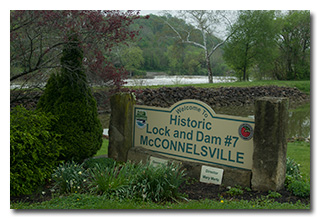 On Friday, May 6, 2022, one member of the Southeast Ohio Radio Adventure Team
performed a successful activation of Muskingum River State Park in Ohio as part of the Parks on the
Air (POTA; link) program.
On Friday, May 6, 2022, one member of the Southeast Ohio Radio Adventure Team
performed a successful activation of Muskingum River State Park in Ohio as part of the Parks on the
Air (POTA; link) program.
Having decided that his goal within POTA for early 2022 would be to earn the Oasis Repeat Offender Activator Award for Muskingum River State Park by visiting all ten of the river-navigation locks and dams that make up the state park, Eric McFadden, WD8RIF, accompanied by his little dog Theo, returned to McConnelsville Lock and Dam #7 on a cool, wet and gray day that promised more rain and thunderstorms.
This was to be Eric's eighteenth activation of Muskingum River State Park, with his previous activations having occurred at...
- Devola Lock #2 (2022-02-18 / 2022-03-11),
- Lowell Lock #3 (2022-02-25 / 2022-03-18),
- Beverly Lock #4 (2022-03-25),
- Luke Chute Lock #5 (2022-02-19 / 2022-04-01),
- Stockport Lock #6 (2018-09-15 / 2021-05-29),
- McConnelsville Boat Ramp (2022-04-29),
- McConnelsville Lock #7 (2022-02-21),
- Rokeby Lock #8 (2021-02-27 / 2022-04-08),
- Philo Lock #9 (2022-03-04) / (2022-04-15),
- Zanesville Lock #10 (2021-07-23 / (2022-04-15), and
- Ellis Lock #11 (2022-03-06).
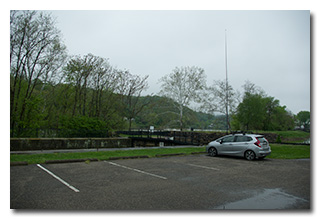 Eric arrived at McConnelsville Lock and Dam #7 at about 1507 UTC, during a lull in the morning's rain. After a quick walk with
little Theo-dog and a visit to the facilities for himself, Eric deployed his 28½' wire vertical on a Jackite 31' telescoping
fiberglass mast and drive-on mount and, because of the real threat of rain and thunderstorms, set up his KX3 in his car. Eric was
on the air at 1519 UTC.
Eric arrived at McConnelsville Lock and Dam #7 at about 1507 UTC, during a lull in the morning's rain. After a quick walk with
little Theo-dog and a visit to the facilities for himself, Eric deployed his 28½' wire vertical on a Jackite 31' telescoping
fiberglass mast and drive-on mount and, because of the real threat of rain and thunderstorms, set up his KX3 in his car. Eric was
on the air at 1519 UTC.
As at his previous visit to the nearby McConnelsville Lock and Dam #7, Eric found he had excellent cell-signal, and he was able to spot himself on POTA Spots (link) and to use POTA Spots to identify possible park-to-park (P2P) QSO opportunities.
Hoping to complete his activation before the rain and thunderstorms arrived, Eric jumped onto 40m, finding himself a frequency to run, calling CQ, and spotting himself to POTA Spots. Eric's first QSO came almost immediately at 1520 UTC with KE4QZB in North Carolina. QSOs came steadily, if a bit slowly, with Eric's twelfth QSO coming at 1543 UTC with AB8DF who was running QRP in Michigan. This run included QSOs with operators in North Carolina (4), Indiana, Pennsylvania, Illinois, Maryland, Tennessee, South Carolina, Ohio, and Michigan.
Pausing to check POTA Spots for possible P2P QSOs, at 1545 UTC Eric made a P2P QSO on 20m with inveterate activator K4NYM who was activating Lake Norris State Conservation Area (K-8357) in Florida.
Finding himself a frequency on 20m to run, Eric began calling CQ and spotted himself to POTA Spots. His first QSO in this run came at 1552 UTC with WB4FSR in Texas. This was followed at 1553 UTC by a QSO with IK4IDF in Italy, and at 1554 UTC by a QSO with faithful hunter K9IS in Wisconsin.
In all, Eric made sixteen QSOs, including one P2P QSO. All of Eric's QSOs were CW and were made with five watts output.
After he had completed his activation, since the rain had not yet come, Eric spent a few minutes exploring and photographing the lock and the island between the lock-canal and the Muskingum River.
Eric then drove the half-mile to the canal's dam, where he and Theo explored and Eric enjoyed hearing the roar of the water flowing over the dam. (Theo, on the other hand, didn't seem to enjoy the roar of the water flowing over the dam at all.)
Before pointing his car back home, Eric crossed the Muskingum River on the historic old bridge to view for the first time the dam on river-right, near Malta.
Eric also submitted his log to the World Wide Flora and Fauna in Amateur Radio (WWFF; link) program.
(return)
